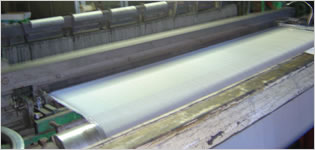Home > Products > Mine Screening Mesh
Mine Screening Mesh,Stainless Steel Strip Mining Screens,Vibrating Screen Mesh
Wetter Stainless Steel Wire Mesh Factory is renowned for its comprehensive portfolio of Mine Screening Mesh products, designed to meet the robust demands of the mining industry. Our diverse selection is tailored to optimize screening processes across various mining applications, ensuring efficient material separation and durability in challenging conditions. Stainless steel mining screen mesh is a crucial component in screening operations, extensively used across various industries including mining, coal, petroleum, fertilizer, and grain processing.
Specifications
Mesh Count and Openings
- Mesh Count: This refers to the number of openings per inch, which directly influences the size of particles that can pass through.
- Wire Diameter: Measured in millimeters, this affects the mesh’s strength and functionality.
- Mesh Openings: Also measured in millimeters, indicating the size of the gaps in the mesh.
Examples:
- 2-Mesh Screen: Wire diameter of 1.80 mm with mesh openings of 10.90 mm.
- 180-Mesh Screen: Wire diameter of 0.053 mm with mesh openings of 0.088 mm.
- 30 × 150 Mesh: Designed for fine sieving with wire diameters of 0.25 mm (warp) and 0.18 mm (weft), offering apertures as small as 80 microns.
Custom Specifications
- Availability of Sizes: Stainless steel mining screen mesh is available in a range of standard sizes, such as 610 × 610 mm.
- Customization Options: Specifications can be tailored to meet specific industrial needs, accommodating unique requirements in size, shape, and material composition.
Types of Stainless Steel Mining Screen Mesh
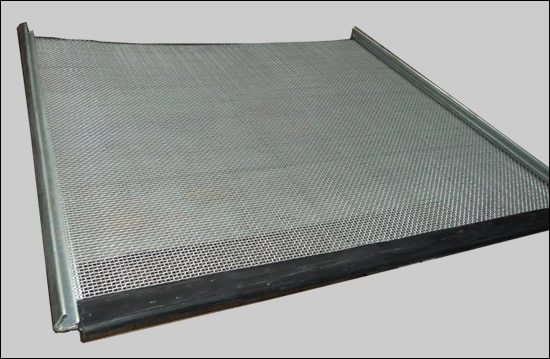
- Slit Screen Plate: Features long, narrow openings designed to optimize the flow and sizing of materials that tend to clog.
- Bar Screen: Comprises parallel bars, ideal for coarse screening in heavy-duty applications such as rocks and large debris.
- Arc Screen Plate: Curved plates that enhance the screening process by channeling materials over a rounded surface, increasing efficiency in separating particles.
- Vibrating Screen Plate: Engineered to perform in high-frequency screening environments, where rapid vibration helps separate fine particles effectively.
- Polyurethane Slatted Screen Panels: Utilizes the durability and flexibility of polyurethane to prevent blinding in wet and dry applications, often used in dewatering.
- Jigger Screen Panels: Specially designed for jigging processes, these panels facilitate the separation of particles of different densities in mineral processing.
- Centrifuge Screen Baskets: Used within centrifuges to separate fine solids from liquids or to extract solids based on particle size through high-speed rotational force.
- Salt Screen Panels: Optimized for the salt processing industry, these panels withstand the corrosive nature of salt while ensuring precise particle size distribution.
Shape
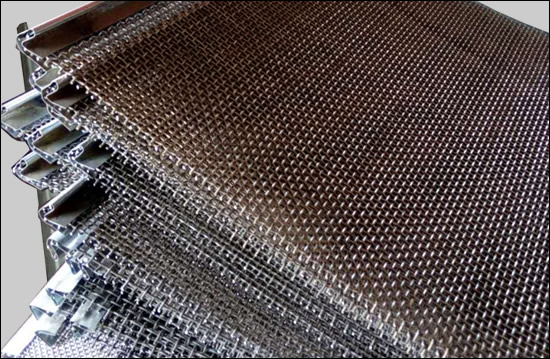
- Flat screen plate: The most common shape, suitable for most flat screening equipment.
- Arc screen: A screen with an arc structure, usually used in applications that require special screening trajectories or improved screening efficiency.
- Cylindrical screen: Cylindrical in shape, suitable for rotary screening equipment such as cylindrical sieves.
- Other shapes: According to actual demand, other special shapes of screen mesh can also be customized, such as fan-shaped, trapezoidal, etc.
Characteristics
- High screening efficiency: Due to the uniformity of the sieve openings and high open area, it can effectively sieve out the target materials.
- Wear-resistant and corrosion-resistant: Made of stainless steel, it has good wear resistance and corrosion resistance, which prolongs its service life.
- Anti-slip and anti-vibration: The screen mesh has a stable structure and can resist vibration and impact during the screening process.
- Strong elasticity and toughness: The screen bars made of cold-rolled stainless steel wire have high strength and toughness and can withstand larger screening loads.
- Strong customizability: According to user demand, different specifications, shapes, and materials of stainless steel mining screen mesh can be customized.
Strip Mining Screens
Strip mining screens are typically large-scale vibrating screens designed to handle high volumes of coal and overburden.
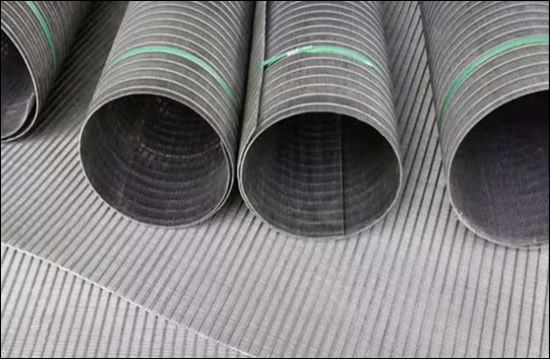
Types of Strip Mining Screens
- Vibrating Screens: Use mechanical vibrations to separate materials.
- Grizzly Bars: Use parallel bars to screen out large chunks of rock and debris.
- Trommel Screens: Rotating drums with perforated surfaces that separate materials based on size.
Dimensions
- Width: 3 to 10 meters (10 to 33 feet)
- Length: 6 to 15 meters (20 to 50 feet)
- Deck Slope: 10 to 15 degrees
Material
- Body: Typically made of heavy-duty steel, such as carbon steel or manganese steel.
- Screen Panels: Can be made of various materials, including stainless steel, rubber, or polyurethane.
Vibrating Mechanism
- Eccentric Shafters: Commonly used to generate vibrations.
- Electromagnetic Vibrators: Provide precise control over vibration intensity.
Screening Surface
- Bar Screens: Used for coarse screening.
- Wire Mesh Screens: Used for finer screening.
- Punch Plate Screens: Used for precise particle separation.
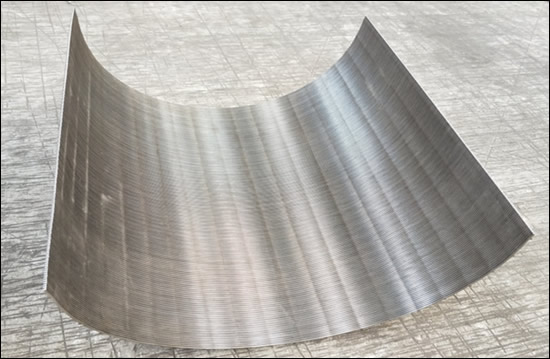
Comparing Different Types of Screen Mesh
Mine Screening Mesh
- Use: Primarily used in mining operations for sorting and grading large rocks, ores, and minerals.
- Material: Often made from high-tensile steel or stainless steel to withstand heavy impact and abrasion.
- Application: Applied in crushing and screening equipment to separate various grades of material in mining and quarrying industries.
Vibrating Screen Mesh
- Use: Designed for separating various types of granular materials, including aggregates, minerals, and other small particles.
- Material: Manufactured from stainless steel, manganese steel, or polyurethane to resist wear and corrosion.
- Application: Installed in vibrating screening machines used in mining, quarrying, construction, and recycling industries for sorting and filtering processes.
Wedge Wire Screen
- Use: Ideal for filtration, separation, and dewatering applications. Known for precise particle separation in industries such as water treatment, food processing, and mining.
- Material: Commonly made from stainless steel for its durability and corrosion resistance.
- Application: Utilized in filtration systems, sand dewatering, and separation of liquids and solids in industries such as wastewater treatment and sugar processing.
Sand Control Screen
- Use: Specifically designed for preventing the ingress of sand into oil and gas wells during production, ensuring well integrity.
- Material: Typically manufactured using stainless steel or corrosion-resistant alloys.
- Application: Installed in oil and gas wells to filter and block sand particles while allowing oil or gas flow, thus protecting equipment and maintaining production efficiency.
Shale Shaker Screen
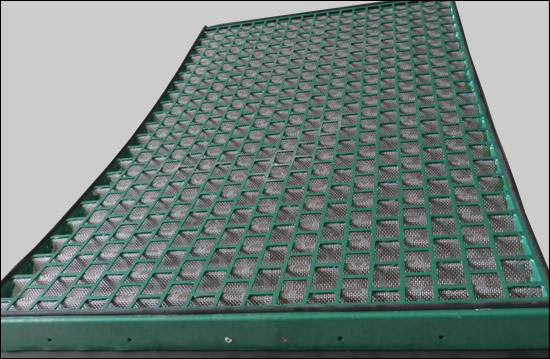
- Use: Used in the oil and gas drilling industry to filter and remove cuttings from drilling mud.
- Material: Made from various grades of stainless steel mesh to endure abrasive conditions.
- Application: Installed on shale shakers in drilling rigs, these screens separate solid particles from drilling fluid, which is then recirculated for efficient drilling operations.
Key Comparison Points
- Material: Mining screen mesh is often made of heavier materials, while vibrating screen mesh and wedge wire screen mesh can be made from a variety of materials.
- Vibration: Vibrating screen mesh utilizes vibration to separate materials, while wedge wire screen mesh relies on the wedge-shaped openings.
- Particle Size: Mining screen mesh and vibrating screen mesh are typically used for larger particles, while wedge wire screen mesh and anti-sand screen mesh are suitable for finer particles.
- Application:
Mine Screening Mesh and Vibrating Screen Mesh are primarily used in mining and construction for sorting materials by size.
Wedge Wire Screen is more focused on filtration and liquid-solid separation across multiple industries.
Sand Control Screen and Shale Shaker Screen are specific to the oil and gas industry, with the former controlling sand in well production and the latter removing solids from drilling fluids.
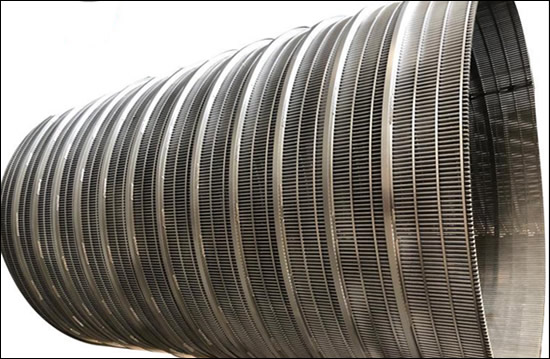
Types of Mining Cylinder Mesh Screens:
- Trommel Screens: Rotating drums with perforated surfaces.
- Rotary Screens: Similar to trommel screens but often have a larger diameter.
- Cage Mills: Cylindrical screens with internal bars or paddles that help to break up clumps of material.
Type |
Grade |
Back Thickness (mm) |
Seam Thickness (mm) |
Cylinder |
High |
2 |
0.5 |
Medium |
2.0-2.5 |
0.5-3 |
|
Low |
2.0-2.5 |
above 3 |
|
Basket |
High |
2 |
0.5 |
Medium |
2.0-2.5 |
0.5-3 |
|
Low |
2.0-2.5 |
above 3 |
|
Strip Seam Sheet |
High |
2 |
0.5 |
Medium |
2.0-2.5 |
0.5-3 |
|
Low |
2.0-2.5 |
above 3 |
By providing robust and adaptable screening solutions, Wetter Stainless Steel Wire Mesh Factory ensures optimal performance and reliability across various industrial applications, enhancing productivity and operational efficiency in the mining and related sectors.


